Table of Contents
India achieved a milestone of 220.10 GW of total installed renewable energy capacity in fiscal year 2024-25. Additionally, the Ministry of New and Renewable Energy (MNRE) reported an annual capacity addition of 29.52 GW which where added by several new renewable energy projects in India.
As a part of its advancement towards the target of 500 GW of non-fossil fuel-based capacity by 2030, India continues to expand its renewable energy portfolio. About 23.83 GW of solar energy and 4.15 GW of new wind energy were added in 2024 thus recording a total 106 GW of solar and 50 GW of wind power capacity.
As India continues to expand its renewable energy portfolio, below is the list of top 10 upcoming renewable energy projects in India ranked based on their capacity.
Top Upcoming Renewable Energy Projects in India (2025) ranked based on capacity
Rank | Project Name | Type | Capacity | Location (State) | Developer | Status | Expected Commissioning |
|---|---|---|---|---|---|---|---|
1 | Khavda Renewable Energy Park | Hybrid (solar & wind) | 30,000 MW | Gujarat | Adani Green Energy Limited | Under Construction | 2029 |
2 | Ladakh Solar Park | Solar | 13,000 MW | Ladakh (Union Territory) | Government of India (SECI) | Announced (being developed) | 2029-30 |
3 | NTPC NGEL Green Hydrogen Hub (Pudimadaka) | Green Hydrogen | 7000 MW | Andhra Pradesh | NTPC Green Energy Ltd. (NGEL) & NREDCAP | Under Construction | Under development |
4 | Dibang Multipurpose Hydro Project | Hydroelectric | 2,880 MW | Arunachal Pradesh | NHPC Limited | Under Construction | February 2032 |
5 | Subansiri Lower Hydro Project | Hydroelectric | 2,000 MW | Arunachal Pradesh | NHPC Limited | Under Construction | May 2026 |
6 | Madhya Pradesh Solar Park | Solar | 2,000 MW | Madhya Pradesh | Government of Madhya Pradesh | Announced | Not Announced |
7 | Pakal Dul Hydro Project | Hydroelectric | 1,000 MW | Jammu & Kashmir | NHPC Limited | Under Construction | September 2026 |
8 | SJVN Bikaner Solar Park | Solar | 1,000 MW | Rajasthan | SJVN Green Energy Limited | Under Construction (trial run done) | September 2025 |
9 | Essar Green Hydrogen (Jamnagar) | Green Hydrogen | 1,000 MW | Gujarat | Essar Future Energy (Essar Group) | Announced | 2028 |
10 | Ratle Hydro Project | Hydroelectric | 850 MW | Jammu & Kashmir | NHPC Limited | Under Construction | Nov 2028 |
Khavda Renewable Energy Park
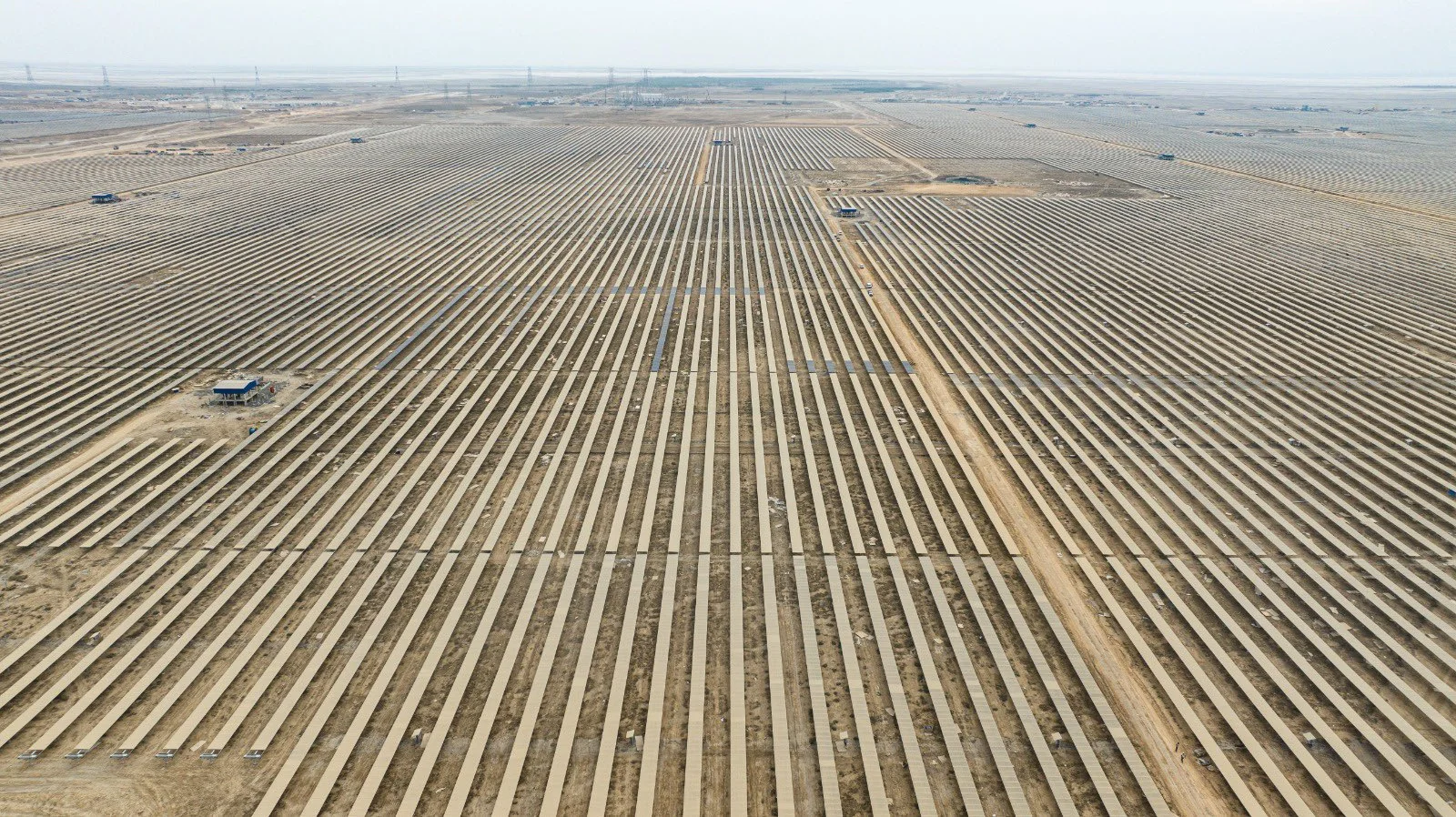
The Khavda Renewable Energy Park is a 30 GW solar + wind project that will become the world's largest renewable energy park once fully operational. Currently, 2 GW of operational renewable energy at Khavda as of 31st March 2025. It is being developed by AGEL (Adani Green Energy Limited), Gujarat Industrial Power Company Limited (GIPCL), Gujarat State Electricity Corporation Limited (GSECL), NTPC Renewable Energy Limited, Sarjan Realities Limited (SRL), Solar Energy Corporation of India Limited (SECI).
It is being built in the Vighakot village, Kutch district, Gujarat spanning over 72,400 hectares which is five times the size of Paris. This renewable energy project is a hybrid project with a total of 26 GW of solar capacity and 4 GW of wind capacity. About INR 1.5 lakh crores have been invested in this project by Adani Green Energy Limited. Know complete details about Khavda Renewable Energy Park.
Ladakh Solar Park
The Ladakh Solar Park is a 13 GW solar power plant being developed across the Pang, Debring, and Kharnak areas of the union territory of Ladakh. This park will comprise a solar and battery energy storage system (BESS). This park is developed to fulfill the energy needs of the Union territory.
The project envisages setting up about 713 km of transmission lines and two 5 GW capacity High Voltage Direct Current (HVDC) terminals, one located in Pang (Ladakh) and one in Kaithal (Haryana). This project will comprise 13 GW of renewable energy capacity and 12 GWh of BESS in Ladakh.
The project will be implemented by Power Grid Corporation of India Limited (POWERGRID) and is scheduled to be implemented in a single phase. It is expected to be completed by the financial year 2029-30.
The estimated project cost is INR 20,774 crores (excluding the Interest During Construction (IDC)). About INR 8,309.48 crores of the project cost is sanctioned by Central Financial Assistance (CFA). The balance project cost is arranged by POWERGRID through debt and equity as recommended by the Public Investment Board (PIB).
POWERGRID is conducting the FEED study (Front End Engineering and Design). The EPC (Energy, Procurement, Construction) contract of this project has been awarded to Prozeal Green Energy. The project is expected to be completed in 5 years from the time the project is awarded after the tender process in 2025.
Pudimadaka Green Hydrogen Hub
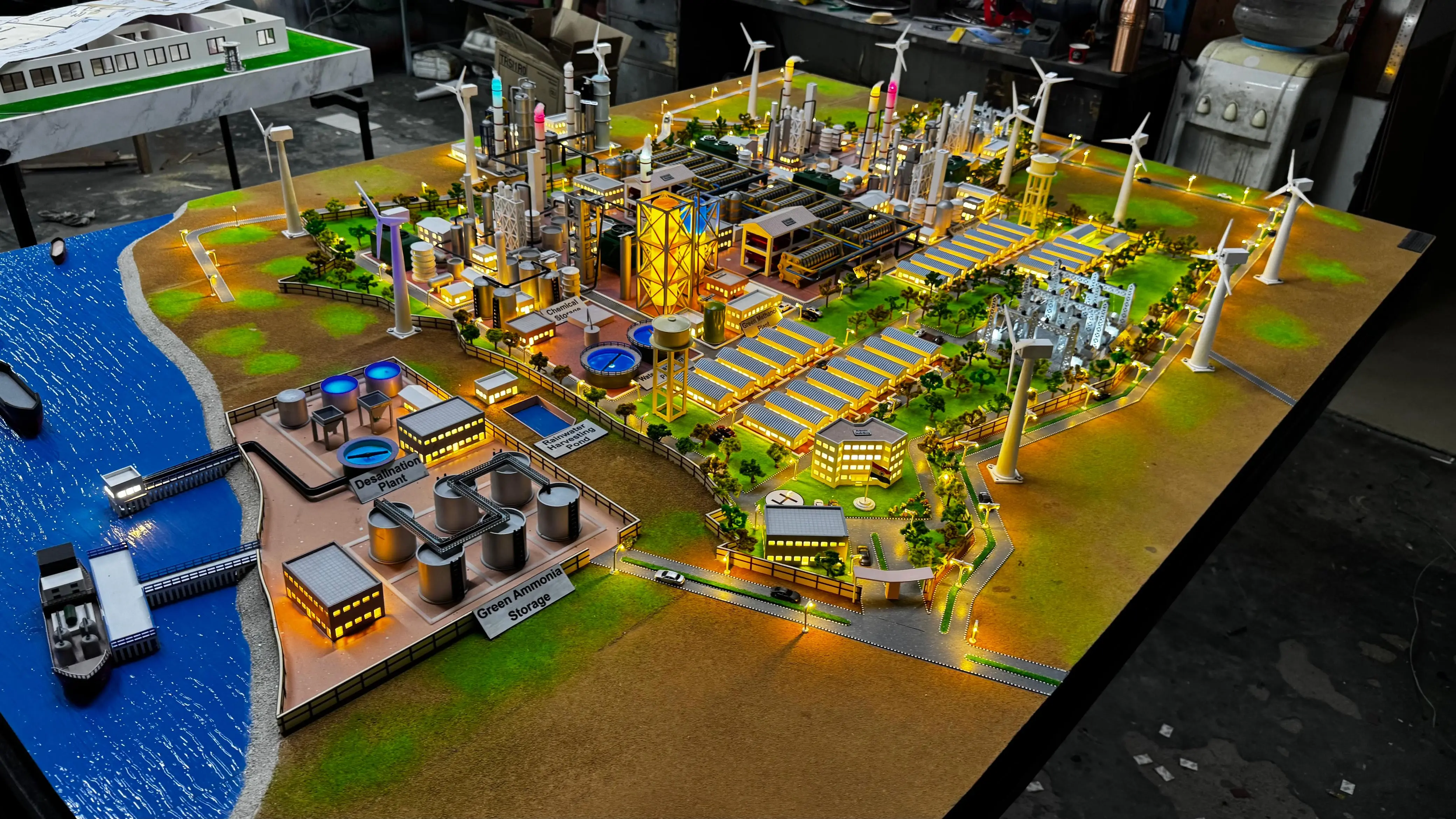
The Pudimadaka Green Hydrogen Hub is being developed by NTPC Green Energy Limited (NGEL), a subsidiary of NTPC Ltd. It is being developed near Pudimadaka village in the Anakapalle district, close to Vishakhapatnam, in Andhra Pradesh. The NGEL project is a GW-scale integrated facility for the production of green hydrogen and its derivatives.
This project is developed jointly by NGEL and the renewable arm of the Government of Andhra Pradesh. The Pudimadaka project is India's first Green Hydrogen Hub under the National Green Hydrogen Mission. This project is being planned at an investment of INR 185,000 crores, and once operational, it will produce 1500 TPD of green hydrogen and 7500 TPD of green hydrogen derivatives (including Green Methanol, Green Urea, and Sustainable Aviation Fuel).
The Pudimadaka green hydrogen hub project will include the development of a manufacturing facility, a green chemical zone, a chemical storage terminal, port infrastructure, a transmission corridor, a 7 GW substation, an 80 MLD desalination plant, an effluent treatment plant, and other relevant facilities.
The project will receive power supply through the 400kV NTPC Simhadri and 800/765kV Anakapalli substations, along with associated transmission lines. Freshwater requirements will be met via the Andhra Pradesh Industrial Infrastructure Corporation (APIIC) network, including the Yeleru Canal. On 8th January 2025, Prime Minister Narendra Modi laid the foundation stone for this project.
Dibang Multipurpose Hydropower Project
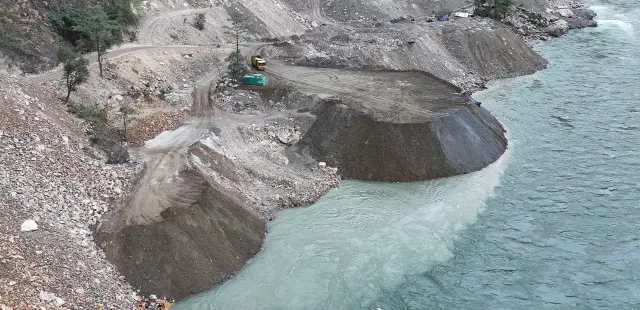
The Dibang Multipurpose Hydropower Project is a 2,880 MW project planned in the Lower Dibang Valley district of Arunachal Pradesh. It is intended as a part of the Viksit Bharat Viksit North East program. Dibang Dam will be one of India's highest dams and the highest bridge and dam in the Northeast.
It is to be built at a project cost of more than INR 31,875 crores. It is expected to generate electricity through hydropower and also help in flood moderation. The Dibang dam will have a 278-meter high dam, which would be the highest Concrete-Gravity Dam in India. It will be constructed with the Roller Compacted Concrete (RCC) technique. The Dibang dam aims to peak at more than 5 lakh cubic meters of concrete in one month, which will be the first in the world.
Once operational, the project will generate 11,223 million units of Hydropower every year. The construction is expected to be completed within a period of 108 months and is scheduled to be commissioned in February 2032. The Dibang project will provide 12% free power and an additional 1% free power for the Local Area Development Fund for the development of Arunachal Pradesh. For flood moderation, a capacity of 1,282.60 Million Cubic Meters will be created to keep the reservoir below the Full Reservoir Level in monsoon.
On 9th March 2024, Prime Minister Narendra Modi inaugurated and laid the foundation stone for the project. It is being developed by the National Hydroelectric Power Corporation (NHPC). The estimated project cost is INR 31,876.39 crores. It is being designed and engineered through Studio Pietrangeli – SMEC JV, Rome, Italy, which also includes construction, planning, and monitoring of the project.
L&T has been awarded the contract for the construction of access roads to the dam project site, the left bank road network, the Dibang bridges, the right bank road of the dam site, and a temporary haulage road to Pathar Camp from ADC Morth, including civil works of the diversion tunnel.
Subansiri Lower Hydro Project
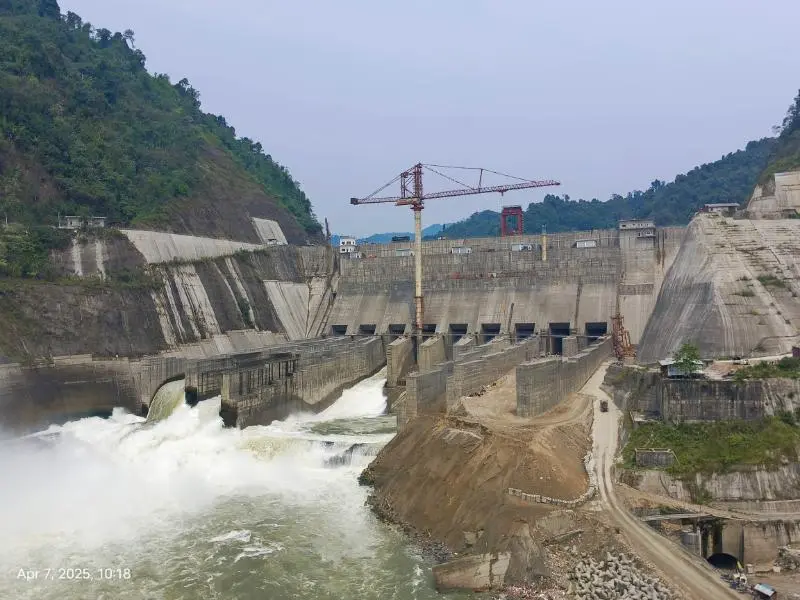
The Subansiri Lower Hydro Project is a 2000 MW project developed under the Run of River Scheme near North Lakhimpur, on the border of Arunachal Pradesh and Assam. It is expected to generate 7421.59 MU (million units) annually. It is a concrete gravity dam 116 meters high from the reverbed and 284 meters long.
This project is being developed by NHPC (National Hydro Power Corporation) and includes eight headrace tunnels eight surge tunnels and eight pressure shafts. It is currently under construction, with 2000 MW renewable capacity built with 8 units each of 250 MW capacity, making it one of the largest hydroelectric projects in India.
As of 2025, the project completion includes 767 ferrules for all eight pressure shaft liner lanes, nine spillway radial gates, and the installation of Spillway Radial Gate S-4. Initially in 2002 during the project announcement, the project cost was estimated as INR 6,285.33 crores, due to several delays and cost escalations the project cost is now anticipated as INR 26075.54 crores. The project is expected to be operational by May 2026.
2000 MW Solar Park in Madhya Pradesh
On 30th April 2025, the Madhya Pradesh state government approved the establishment of a 2000 MW solar park along with a 1000 MW composite energy storage project. This project aims to supply electricity to both Madhya Pradesh and Uttar Pradesh during peak demand.
Pakal Dul Hydro Electric Project
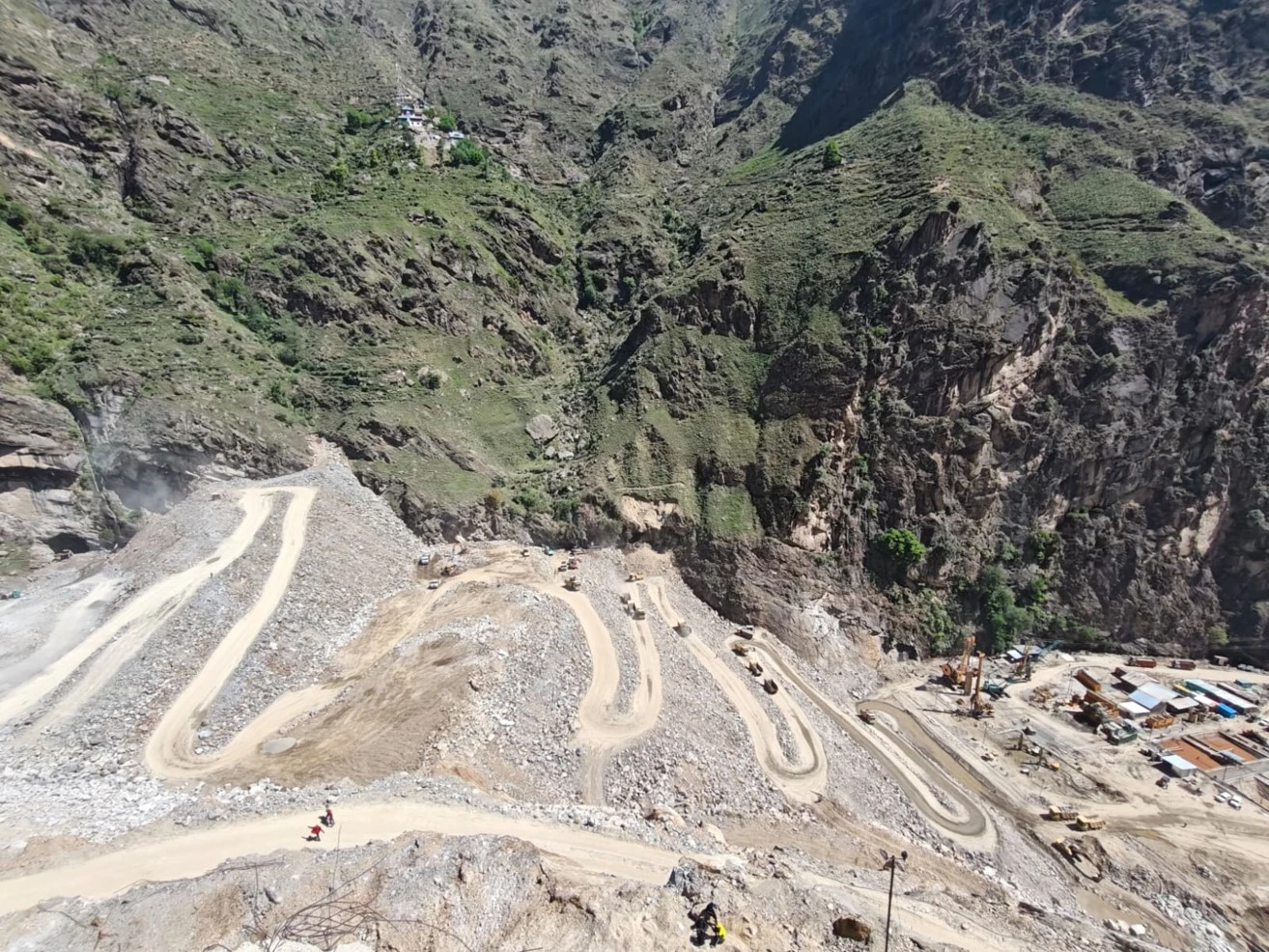
The Pakal Dul Hydro Electric Project is a 1000 MW project developed by a joint venture company Chenab Valley Power Project Limited (CVPPL). It is a joint venture by NHPC Limited and JKSPDC (Jammu and Kashmir State Power Development Corporation Limited). It is proposed on river Marusudar, in the Village Drangdhuran in Kishtwar District of Jammu & Kashmir. It is being constructed as a 167 m High Concrete Face Rockfill Dam with an underground Power House with 4 units of 250 MW each.
Recently, in February 2025, REC Limited, a Maharatna Central Public Sector Enterprise (CPSE) under the Ministry of Power, signed a term loan agreement worth INR 2,147.508 crores with Chenab Valley Power Project Limited. The entire project cost is estimated as INR 12,669.67 crores.
SJVN Bikaner Solar Park
The SJVN Bikaner Solar Park is a 1000 MW solar project being developed by SJVN Green Energy (SGEL) in Rajasthan. SJVN Limited (Satluj Jal Vidyut Nigam) won the competitive bidding for the project at a cost of INR 2.57 per unit, and it is being constructed by SJVN Green Energy Limited. This 5000-acre solar project is being constructed near the village of Banderwala in the Bikaner district of Rajasthan.
The final closure for this project was achieved in 2022, after TPSS (Tata Power Solar Systems) was awarded the EPC contract on a turnkey basis. Recently, on 31st March 2025, SJVN announced the successful completion of the trial run of 241.77 MW capacity in phase 1 of the 1000 MW project.
The completion and operation of the 1000 MW project is expected by 30th September 2025, and upon completion and commission, SGEL will supply the generated solar power to three states - Rajasthan, Jammu & Kashmir, and Uttarakhand. Read SJVN Bikaner Solar Park to know more about this project. The project is financed by the Indian Renewable Energy Development Agency Ltd (IREDA), which signed a loan agreement of INR 4,444.71 crore with SGEL.
Essar Green Hydrogen Plant Jamnagar
The Essar Green Hydrogen plant in Jamnagar is a 1 GW hydrogen capacity plant developed by Essar Future Energy. Essar Group plans to invest INR 30,000 crores over the next four years (2024-2028). This project will use about 4.5 GW of renewable energy from Essar Renewables to split water molecules to produce hydrogen and oxygen.
Through this project, Essar aims for a green molecule capacity of 1 million tonnes per annum. This project is part of its broader strategy to decarbonize its operations through green molecules. It aims to produce transportable green molecules directly rather than converting green ammonia back to hydrogen which is a costly process.
Ratle Hydro Project
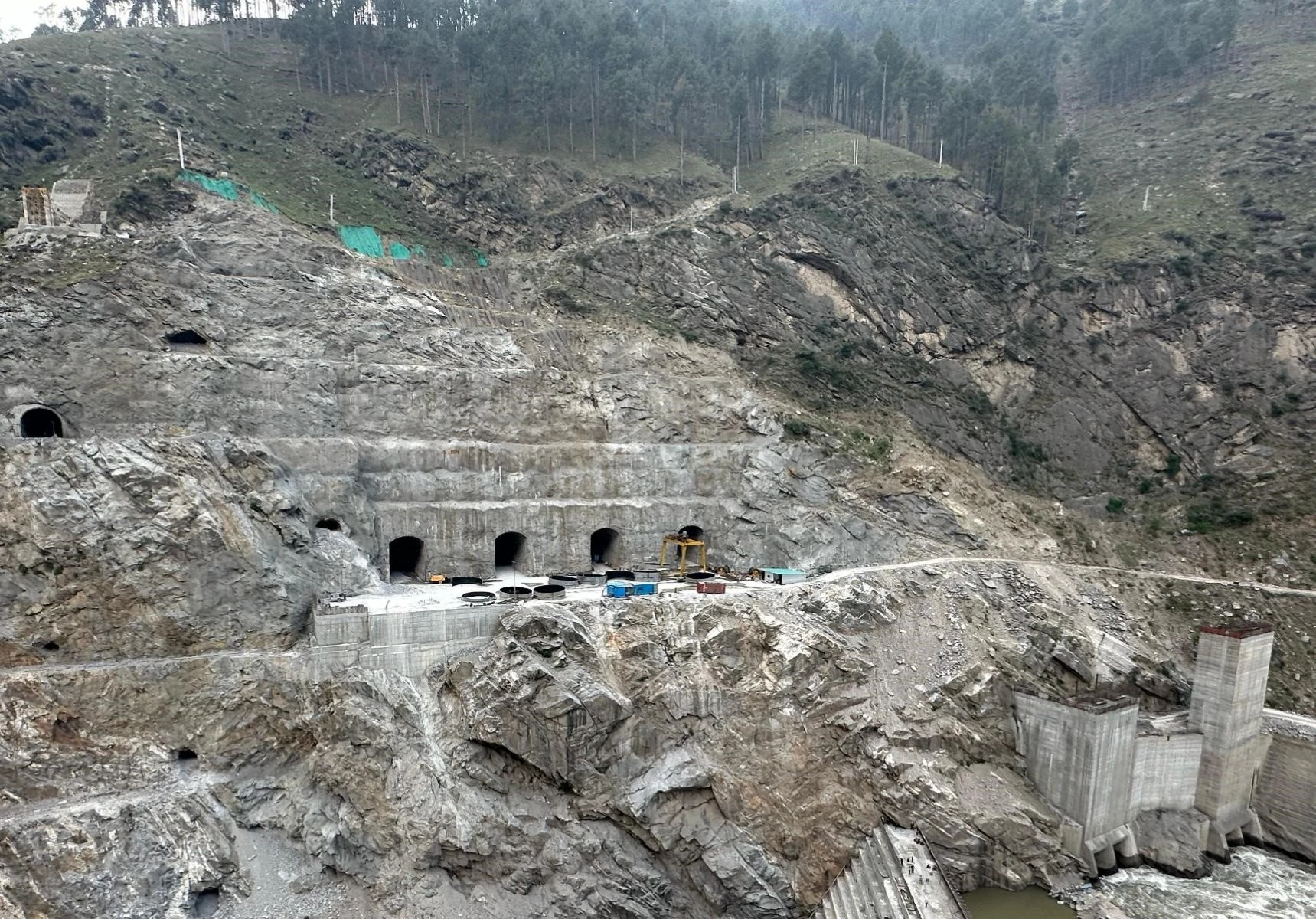
The Ratle Hydro Project is an 850 MW hydroelectric project developed by a joint venture company formed by NHPC Limited and Jammu & Kashmir State Power Development Corporation Ltd called Ratle Hydroelectric Power Corporation Limited. The joint venture company was formed in 2021 with NHPC and Jammu & Kashmir State Power Development Corporation Ltd (JKSPDC) holding equity shares of 51% and 49% respectively.
The Ratle Hydro Electric Project is proposed on River Chenab, located in the Kishtwar district of Jammu & Kashmir. The construction date is expected as 60 months and in January 2024, the Chenab River was successfully diverted for the construction of the Ratle hydroelectric dam. The project is expected to be commissioned by November 2028. The project is being developed at a total cost of INR 5281.94 crores.
India’s Renewable Energy 2024 Milestones and 2025 Roadmap
India continues to witness unprecedented growth in 2024 as it proceeds towards its ambitious 2025 targets. In 2024, India made significant strides in the renewable energy sector dominated by solar and wind energy installations backed by policy advancements, and infrastructural improvements. With abundant renewable energy sources, India aims to achieve 500 GW of non-fossil fuel-based energy capacity by 2030.
Solar energy remained a dominant contributor to India's renewable energy growth accounting for 47% of the total installed renewable energy capacity. In 2024, about 18.5 GW of utility-scale solar capacity was recorded whereas, 3.4 GW of new wind capacity was added to the portfolio.
Ministry of New & Renewable Energy (MNRE) played a key role in achieving the 2024 milestones, its key highlights include:
Green Hydrogen Policies
Expansion of domestic solar PV and wind turbine manufacturing
Grid Infrastructure Development.
States like Rajasthan, Gujarat, and Tamil Nadu contributed about 71% of India's total utility solar installations. Likewise, Karnataka, Gujarat, and Tamil Nadu led the way for new wind energy installations in the country. As the country proceeds towards 2025, it aims to achieve renewable energy targets and solidify its status as a global leader in clean energy transitions.
Conclusion
India continues to expand its renewable energy portfolio through several renewable energy projects such as the Pudimadaka green hydrogen project, Ladakh Solar Park, and Dibang HE project. It achieved a milestone of 220.10 GW of total installed renewable energy capacity in 2024.
Thus, India continues to position itself in the global renewable energy market through several large-scale renewable projects like the Khavda Renewable Energy Park, Ladakh Solar Park, and more.
Also Read: [2025] Top 10 Renewable Energy Companies in India
Stay Updated on the Latest Renewable Energy Projects in India!
Subscribe to Blackridge’s India's Renewable Energy Projects Database and get access to:
Reliable and high-quality insights
Upcoming, in-progress, and completed construction
EPC projects
Essential details on key stakeholder contact information
Timely updates
Start a free demo to unlock new business opportunities!



![Global Top 20 Electric Car Companies [2025]](https://images.blackridgeresearch.com/zA7C1E09-z4Uj64Eb0zfkw/60565c6a-79ca-4599-29f7-1fbeb8cded00/public)
![Global Top 10 Electric Truck Companies [2024]](https://images.blackridgeresearch.com/zA7C1E09-z4Uj64Eb0zfkw/03b10018-e64b-4abd-d4b5-c5e32ab15400/public)

Leave a Comment
We love hearing from our readers and value your feedback. If you have any questions or comments about our content, feel free to leave a comment below.
We read every comment and do our best to respond to them all.